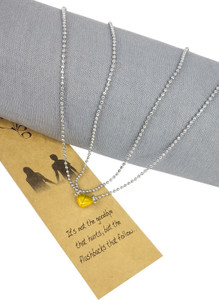

Vernier Caliper (digital versions also suitable - £15.00 upwards).Fine Cut Razor Saw ( Important - £12.99).This is particularly important for the more delicate middle layers.) you pay for the size of wood used, so if you have spare space, have duplicates made. (it will probably cost you no more to have two of each piece laser cut. If possible to source a small enough double ended barbell, it would be a more suitable hinge than the 'bent pin'.(Magnets help to maintain the stiffness of the locket.) This would make the locket stronger, and enable easier addition of the magnets. Look into making each layer thicker than 1mm.Unlike me, model all of your work-pieces using 3D CAD system to ensure correct design.Like me, double up on all work-pieces in case of breakage.I recommend that if you are attempting this project, you: I found that creating the Cartouche locket is a very rewarding project, however there are a couple of very fiddly, time consuming sections that can easily be done wrong and require rework. Once the parts were then returned to me, I manufactured the hinges (one 'split pin' and one 'bent pin' hinge), and performed the final assembly.
#A locked heart locket pdf#
Once the locket had been designed, using AutoCAD I created a PDF of my design the work in vector format (a good guide can be found here ) in order for the manufacturer to laser cut work-pieces from 1.5mm walnut using a CNC machine. I highlight the error, so that you can avoid my misfortune. However due to a miss assumption made by myself, half of the logo inscription was unfortunately on the wrong side. I designed a tailored a logo onto the front which would then transform into the first letter of my wife's name once the locket was twisted into heart configuration. Wanting to achieve a true double hinged locket as per the film, I set about designing the locket in a similar style as research item #3 the 'Illusionist locket: A how to.' by nazdreg2007, whilst also bringing in a few touches from the work of others.

I had researched several different methods of achieving the locket hinge including these other instructables:

The film's main character: Eisenheim (Played by Edward Norton) describes the wooden locket as a Cartouche which is derived from Egyptian hieroglyphs, roughly meaning an oval with a line at one end.Īs you can see from the embedded video, the locket incorporates a double hinge system in order to twist in half, before the lid can then be opened. Very rare World War I- and World War II-era British and American military uniform locket buttons exist, containing miniature working compasses.The intention of this project is to design and build wooden locket similar to the one shown in the film The Illusionist. Perfume lockets were popular in eras when personal hygiene was restricted and sweet smelling perfume was used to mask the odour of a person or their companions. Such lockets are generally used for items like locks of hair which could fall out and become lost if the locket were repeatedly opened, whereas photograph lockets are generally enclosed on all sides and the photographs are secured by pieces of clear plastic.Īnother kind of locket still made was in a filigree style with a small cushion in the centre to which a few drops of perfume should be added. Keepsake lockets can also be made with a glass pane at the front so that what is inside can be seen without opening the locket. Around 1860 memento lockets started to replace mourning rings as the preferred style of mourning jewellery. This was a common style in the Victorian Age.
#A locked heart locket free#
Some lockets have been fashioned as 'spinner' lockets, where the bail that attaches to the necklace chain is attached but not fixed to the locket itself which is free to spin. Lockets usually hold only one or two photographs, but some specially made lockets can hold up to eight. They come in many shapes such as ovals, hearts, prisms and circles and are usually made of precious metals such as gold or silver befitting their status as decorative jewellery. Lockets are generally worn on chains around the neck and often hold a photo of the person who gave the locket, or they could form part of a charm bracelet. Historically, they often opened to reveal a portrait miniature. Lockets are usually given to loved ones on holidays such as Valentine's Day and occasions such as christenings, weddings and, most noticeably during the Victorian Age, funerals. A late 17th-century locket, depicting the head of King Charles I (reigned 1625–1649)Ī locket is a pendant that opens to reveal a space used for storing a photograph or other small item such as a lock of hair.


 0 kommentar(er)
0 kommentar(er)
